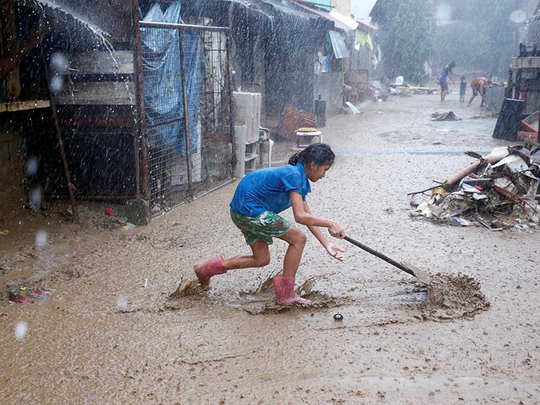
Manila: Deaths caused by ten days of monsoon rains in Luzon has reached 13 with nine victims still missing, officials said as government and non-government organisations rush aid to affected residents.
According to Ricardo Jalad, administrator of the Office of Civil Defence, said among the latest victims were members of an engineering firm constructing an underground water diversion tunnel in Quezon province.
Reports said six members of the team were confirmed dead, five of whom were construction workers.
Tragedy struck when a flash flood struck the Sumag River Diversion Tunnel in General Nakar in Quezon on Saturday.
The Sumag River Diversion Tunnel is part of a project to boost the capacity of the Angat Dam which provides hydroelectric power to Metro Manila and surrounding areas as well as irrigation.
Heavy rains spawned by the southwest monsoon or Habagat brought continuous rains over most part of the northern main island, affecting Metro Manila and the regions of Northern and Central Luzon as well as the Cavite-Laguna-Batangas-Rizal-Quezon (CALABARZON) corridor.
Most of the casualties were victims of flash floods, and had died from drowning or collapsed walls. Nearly all of the casualties, except for one from 68-year-old victim Benedicto Brasileno of Januay, Iloilo in Central Philippines, were from the country’s north and the national capital region.
According to Social Welfare Secretary Judy Taguiwalo, 55,963 families or 262,271 people from 350 villages in the National Capital region, Cordillera Autonomous Region, Ilocos, Central Luzon, CALABARZON and Negros Island had been affected.
A total, 4,487 families or 17,896 people are still in 77 evacuation centres set up by local government units, while 10,562 families or 51,300 persons temporarily took shelter with their relatives and friends.
Although not as strong as typhoons, monsoon rains cause major difficulties to affected residents as the rains linger over a longer period, sometimes lasting for weeks causing floods.
In 2012, ceaseless rains spawned by a typhoon enhanced monsoon and left parts of the capital and Central Luzon provinces underwater for days.












